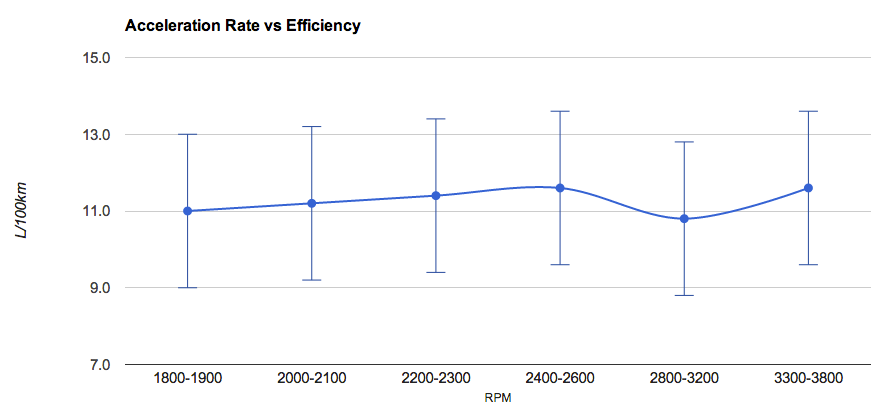The most efficient speed to cruise at with an automatic transmission (at least the kind with a torque converter) is the minimum speed that the torque converter will lock up in high gear. For my wife's Toyota 2007 Matrix (1.8L, four speed auto), this speed is 60 km/h (37 mph). The most efficient way to accelerate above this speed is at max load without the torque converter unlocking. For the Matrix, this is 75% "LOD" on the ScanGauge II.
The question that has plagued me for a while is, what is the most efficient way to accelerate up to 60 km/h? Slowly? Quickly? Today I finally got around to executing a test using my SGII.
I first determined a fixed distance to test with by accelerating very slowly from a stop to 60 km/h. As soon as 60 km/h was reached, this was the fixed ending point, using signs and trees beside the road as markers. This distance ended up being 740m (2400ft), going by Google Earth.
For every [quicker] run after that, 60 km/h was reached before the ending point, so the remaining distance was travelled with the torque converter locked at a steady 60 km/h, with the final L/100km figure taken at the fixed ending point.
The two constants were the test distance and 60 km/h vehicle speed at the ending point.
The variable was the acceleration rate up to 60 km/h.
What I found was quite surprising. Different acceleration rates have little effect on efficiency with this car, from ulta-slow to very fast. And the most efficient acceleration rate is much quicker than I ever thought it would be.
Test results chart:

Test results graph:
